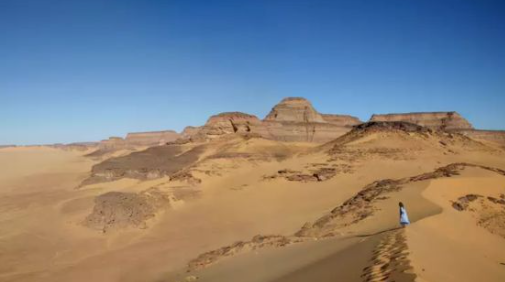
The Sahara Desert, now dry and sandy, was once filled with lakes and green grasslands. Remains found in rock caves show ancient people lived here with their animals. “Old lake layers, plant pollen, and tools prove people hunted, raised animals, and collected food in this now-empty area,” says Dr. Nada Salem from the Max Planck Institute.
New DNA research helps us understand these ancient Sahara people. Scientists studied genes from two 7,000-year-old women found in Libya’s Takarkori cave. Their DNA closely matched 15,000-year-old food gatherers from Morocco, showing North Africa had stable populations during the Sahara’s wet period. This group separated from other Africans over 50,000 years ago when humans first left Africa. They stayed mostly genetically alone for thousands of years, only mixing a little with people from the northeast — including some DNA from Neanderthals, our ancient relatives.
“The Libyan women had less Neanderthal DNA than Moroccans but more than southern Africans,” says scientist Johannes Krause. This suggests natural borders stopped European genes from moving further south. Another discovery shows that while early Moroccans hunted for food, the Libyan people started keeping animals without mixing much with outsiders. “Animal herding probably spread through sharing ideas, not people moving,” explains Dr. Salem. Researchers think the Sahara’s different environments — like wetlands and mountains — acted as natural walls affecting both genes and culture.
This important study shows how humans adapted to extreme environments. “Learning about Sahara’s past helps us understand human movements, survival methods, and cultural changes,” says archaeologist Savino di Lernia. By studying old DNA and objects, scientists keep discovering how humans survived in Earth’s toughest places.
奇速英语 原创编写 版权所有 侵权必究! 每日更新 个性化阅读 英语飙升!
1. 1. What did scientists find to prove ancient humans lived in the Sahara?
A Modern cities under the sand.
B Old tools and plant remains.
C Maps drawn on animal skins.
D Stories from local people.
2. 2. What does the DNA study tell us about North Africans 7,000 years ago?
A They moved to Europe frequently.
B They ate only plants and fruits.
C They built many large caves.
D They shared genes with Moroccans.
3. 3. What does “natural walls” mean in the text?
A Big houses made of stone.
B Things like rivers and hills.
C Rules made by ancient leaders.
D Walls between different countries.
4. 4. Why is studying the Sahara’s past important?
A To explore the history of the Sahara Desert itself.
B To analyze ancient human DNA for medical research.
C To learn how humans lived in bad natural conditions.
D To prove that cultural changes are unrelated to survival methods.






 更多优质学习内容
更多优质学习内容



